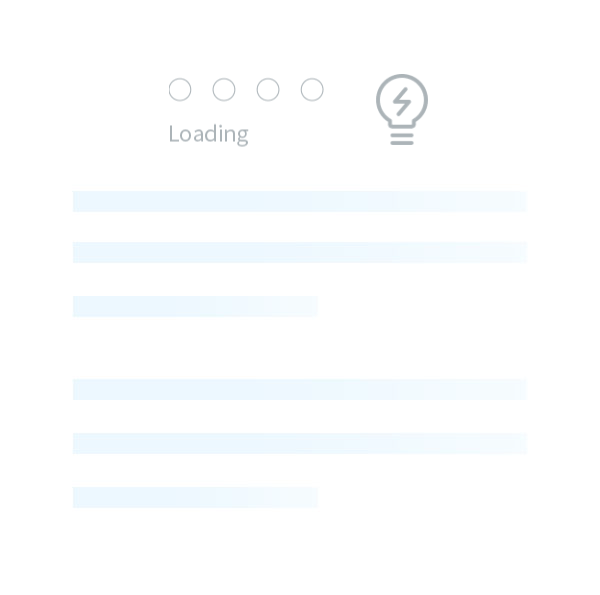
2020年上海国际乐器展参展报名预约通道开启!
上海国际乐器展已在全球乐器行业砥砺前行十八年,是贯通全球行业产业链,企业发布新品、贸易合作交流、展示前沿技术、品牌宣传推广、网罗海内外乐器的一站式商贸平台。立足亚太,辐射全球,作为世界最大规模的专业乐器展会之一,上海乐器展已经成为全球业界人士一年一度的相聚盛会。


距离2020中国(上海)国际乐器展览会开幕
还有61天
2020上海国际乐器展
10月再将扬帆起航


中国(上海)国际乐器展览会
观众预登记上线!
9月15日之前预登记
即可获取免费入场的机会!
实名登记、绿色随申码、
现场测温、佩戴口罩
一个都不能少!

为了提供一个安全的观展环境,今年Music China组委会将根据防疫要求,结合《上海市会展行业新冠肺炎疫情防控指南》相关规定,对2020年的预登记与现场观展进行调整。
为了保护您和每一位到场人员的健康,所有进馆人员必须同时满足以下四项条件,请务必仔细完整地阅读全文:
01
实名预登记
2020年上海国际乐器展将实行实名注册,进行观众预登记操作时,请务必填写真实有效的身份信息及手机联系方式,并在入场时代号身份证原件。现场经人脸识别验证所登记的身份证原件,确保“人证合一”。
* 现场每次进出需刷本人身份证,观展时请务必携带好本人身份证原件;
* 常驻中国的外籍人员或港澳台人士请至展会官网进行预登记注册,现场需出示护照、港澳居民来往内地通行证或台湾居民来往大陆通行证原件,由工作人员进行核验登记后入场;
* 临时从海外或港澳台入境的人士须提供核糖核酸检测报告和解除隔离通知书,同时出示护照、港澳居民来往内地通行证或台湾居民来往大陆通行证原件,并拍摄照片留底后,方能进入展馆;
* 未成年人谢绝入场。
02
绿色“随申码”


所有进入展馆的人员须在参展前做好自我健康状况监测,确保:
①本人及密切接触者无发热、咳嗽、乏力、腹泻等症状方可来沪;
②来自/去过疫情重点地区人员进馆前须已完成 14天隔离并持有 7 日内核酸检测阴性证明;
③ 来沪前须做好个人健康申报,并生成绿色“随申码”(可点击微信小程序“随申办”或进入支付宝“健康码”版块办理)。没有绿色“随申码”的人员不得进入展馆。
*主办单位将不接受涉疫风险人员及来自疫情高风险地区的人员注册观展和进入展馆;
03
现场测温


现场将设置临时留验点,发现测温达到或超过 37.3℃的进场人员须配合主办单位前往临时留验点进行二次测温。如确定体温异常,须进行信息登记后及时离场并就医。
04
佩戴口罩


所有进入展馆的人员必须全程佩戴口罩,保持1米的安全社交距离,不聚集不簇拥,减少身体接触。
具体报名申请流程请关注公众号“西尔维娅钢琴”最近发布的报名指导文章。
西尔维娅钢琴年鉴
著名作家乔治肖伯纳说:“钢琴是有史以来最重要的乐器发明,它对音乐的重要性,犹如印刷之于诗歌”。在所有乐器中,钢琴简直就是一种机器,人用手操作的机器。人机结合,人机相遇,它忽地灵通了!弹贝多芬的曲,如哲人之沉思雄辨;弹肖邦,如吟诗;弹德彪西,如作画。它竟兼有了诗人、画家、哲人、鼓动家的功能。尼采、托尔斯泰、阿道尔诺们爱之,弹之,当然不是没有缘故了。
"The piano is the most important instrument ever invented; its importance to the music, as printing is to poetry." Famous writer George Bernard Shaw said.
In all kinds of musical instruments, a piano is a machine that needed hand operation.
With the meeting and combination of man and machine, it was suddenly informed!
Playing Beethoven's music, powerful arguments such as the philosopher's contemplation;
Play the Chopin such as poetry; playing Debussy, painter.
It had features of poet, painter, philosopher and motivator.
Nietzsche, Tolstoy, Gretel love it and play,
Not without reason, of course.
1709年
在意大利佛罗伦萨的羽管键琴制造师克里斯托弗利在自己的工作室里,改进创新设计了琴键带动琴槌击弦的机械结构,这种结构的击弦机,用不同的力度敲击琴键,使钢琴可以发出明显的强弱变化,命名为Gravicembalo col Piano e forte,后来简称为piano forte;并且先后在法国和德国逐渐被运用和发展。
In 1709, Christopher Lee, a harpsichord maker, had designed a new mechanical structure of the hammer hitting the action led by key-board in his studio of Florence, Italy. The piano could sound significantly by the action hitting the key-board in the different strength. It named Gravicembalo colPiano e forte, and later referred to as the piano forte; and had gradually been applied and developed in France and Germany.
1711年
英国的小号手和诗琴弹奏者约.塞乌发明了音叉;作为重要的声学工具和定音工具,一直沿用了几个世纪。
In 1711, Yo Seu, a British trumpeter and lutenist, had invented the fork. Fork had been in use for centuries as an important acoustic instrument and tuning tool.
1716年
英国的数学家Taylor,推演出了很重要的计算琴弦频率的公式,计算得出琴弦的频率取决于弦长、质量和拉力。这一发现和演算,给后期钢琴琴弦计算设计奠定了基础。
In 1716, Taylor, a British mathematician, had deduced a very important formula to calculate the frequency of the strings; by that formula, it had been concluded that frequency of the strings depended on chord, quality and tension. Thus had been the foundation for design of the late piano strings.
1725年
德国著名的管风琴制造师希尔伯曼,制造出了德国第一架槌式钢琴(Hammerklavier)。
In 1725, Gottfried Silber Mann, a Germany famous organ maker, made Germany the first mallet-piano (Hammerklavier).
1729年
当时在莱比锡托马斯教堂任职的管风琴大师、唱诗班指挥约翰.塞巴斯第安.巴赫指出了当时钢琴的高音区声音弱的缺陷和不舒适重的弹奏手感。通过管风琴制造师希尔伯曼的进一步努力和完善工作,后来得到了巴赫的认证和认可;随后钢琴制造发展的中心移到了德国。
In 1729, serving in the Thomas Church in Leipzig organ masters, choir conductor, John Sebbas Bach pointed out that the piano's high-pitched voice of weak defects and uncomfortable playing feel. Through further efforts and improvement, the work of the organ-maker Silber Mann had gained the approval and accreditation of Bach followed development of piano manufacturing center moved to Germany.
1742年
约翰.邵赫(JohannSocher)在德国的桑托芬,制造了一架迄今所知的最古老的方形(也叫桌式)钢琴,在此之前只是翼琴和被改造的羽管键琴。
In 1742, Johann Socher, in Sonthofen of Germany, had made a most ancient square (also called a table) piano which was known till now, before that there were just harpsichord and transformed clavichord.
1745年
在德国格哈市的弗雷德里希把自己的想法变成了现实,为了节约空间,把钢琴竖起来放置;并制造了一台可以竖起来放置的钢琴,类似竖起来的三角钢琴,称它为Pyramide(金字塔形);之后相似的设计被很多钢琴制造师采用,但是距离我们现在的立式钢琴还差很远。
In 1745, in Gerhard City of Germany, Friedrich had put his idea into reality-to place the piano upright to save space; and manufactured one piano that can be placed upright, similar to the Grand Piano, called Pyramide(pyramid shaped); then after that many similar designs were utilized by many piano manufacturers, but the distance also was still far from our current upright piano.
几年以后弗雷德里希开始批量生产方型钢琴,称为“fortbien”。
A few years later Friedrich started mass production of square pianos, known as "fortbien".
1753年
卡尔.菲利普.以马内利.巴赫出版的《试述键盘乐器演奏法》中虽然仍旧偏爱翼琴,但与此同时也不乏对新钢琴赞美之意。以马内利.巴赫因此也成为了钢琴音乐的奠基人和先驱。此后,在这一音乐领域中相继产生了莫扎特、海顿以及贝多芬等著名音乐家。
In 1753, in The Play on the Keyboard Instruments, published by Carl Philip Emmanuel Bach, though the clavichord was still preferred, but at the same time also there was no lack of praise for new piano. Emmanuel Bach also became the founder and pioneer of piano music. Since then, in this area of music, Mozart, Haydn and Beethoven, and other famous musicians appeared.
1767年
从方形琴出现以后,几十年中在英国得到继续发展和完善,并且在这个时期方形琴作为伴奏乐器,首次出现在音乐会舞台上。
In 1767, in several decades in the United Kingdom the square piano had been developed and improved, and square piano as accompaniment during this period, had firstly appeared on the concert stage.
1768年
约翰.克里斯蒂安.巴赫把方形琴作为独奏乐器引入到音乐厅里,“伦敦巴赫”。一直到1770年作曲家们还没有专门关注“新钢琴”Hammerklavier、pianoforte,他们依然还是为羽管键琴(Cembalo)为主体写的乐曲或者说也有“新钢琴”的。具有明显的钢琴风格的并且体现钢琴演奏技术的乐曲是由巴赫的儿子们以马内利.巴赫和克里斯蒂安.巴赫率先发展起来的,直到后来的海顿、莫扎特、克里门蒂。克里门蒂本身自己就是一个钢琴制造师。
In 1768, John Christian Bach Piano led square piano as a solo instrument into the concert hall, called the "London Bach". Until 1770, composers had not focused on "new piano" Hammerklavier, pianoforte, and they still wrote for subject the harpsichord (Cembalo) the music or there was also for"new piano". Bach's sons Emmanuel and Christian Bach took the lead in the development of playing music with distinct piano style and performance skills. After that Haydn, Mozart, and Andreas Clementi Andreas Clementi had been the piano makers.
1770年
钢琴制造师约翰.安德雷亚斯.施泰因在德国奥格斯堡发展了新的击弦机,将弦槌置于琴键杠杆上(Prellmechanik)。这种简单的“断连”构造形式也被称为“维也纳式击弦机钢琴”,这种乐器技术基础对于维也纳古典钢琴音乐具有举足轻重的作用。具有这种类型击弦机的钢琴制作方法一直持续到十九世纪。
In 1770, John Andrea r .Stein, a piano maker in Germany Augsburg had developed new striking machine-place string drumsticks on the key levers (Prellmechanik). This simple "break even" form was also known as "Viennese action piano", this instrument technology based on the Vienna classical piano music had played an important role. The piano production with this type of action had been continued into the 19th century.
1772年
从1772年开始到1777年英国人柏克尔和斯坦达特完善了钢琴击弦机系统,成为英式击弦机,也就是现代三角钢琴击弦机的前身和基础。
In 1772, from 1772 to 1777, Bai Keer and Standart, two British, had perfected action system to become British-style action, which was the predecessor and foundation of the modern Grand Piano Action.
1774年
英国的约瑟夫.梅林研制采用了UnaCorda,
移动踏板装置,使击弦机移动,达到了琴槌可以敲击单弦并使钢琴声音变弱的可能性。这个时期为膝踏板,也就是用膝盖控制的踏板。直到发展为现代的脚踏板。
In 1774, Joseph Merlin, a British, had developed Una-Corda, a mobile pedal device, so that the hammer can reach the single string to make the piano may sound weakened. In this period it was the knee pedal, which was controlled by the knee pedal. Until now it was developed to modern pedal.
1778年
钢琴琴弦的排列设计和击弦点定位首先被英国的鲍德温系统化,这个领域也是首次以科学为依据被确定下来。
In 1778, the arrangement design for wires and striking location of the piano had been firstly systematized by Baldwin from United Kingdom, which was the first one to be determined on the basis of science in this field.
1790年
埃哈德在巴黎采用了三弦制造,钢琴高音区和中音区每个音对应三根弦。
In 1790, Erhard in Paris had manufactured the three-stringed piano treble, the Alto field each sound corresponds to three strings.
1793年
伴随了巴赫家族近两代的英国鲍罗德沃德(Broadwood)钢琴厂制造了最后一台羽管键琴;在此约十年前鲍德温销售38台羽管键琴和133台槌式琴( Hammerklavier)。这一年莫扎特病故已经有两年,贝多芬刚刚23岁,但是一直还在用羽管键琴。
In 1793, Broadwood piano factory of Bach family from United Kingdom with nearly two generations had made the last harpsichord; about ten years ago, Baldwin had sold 38 harpsichords and 133 hammerklaviers. Two years after Mozart died, Beethoven was just 23 years old, but still played with the harpsichord.
1794年
德国的依巴赫制造了他的第一台方形琴并且创建了至今存在的最老的钢琴厂。
In1794, Ybahhe from Germany had built his first square piano and created the oldest piano factory which still existed now.
1808年
法国钢琴制造师塞巴斯蒂安.艾哈德发明了三角钢琴击弦机的“简单断连”装置,就是我们说的复振杠杆式三角钢琴击弦机。如今,三角钢琴的击弦机仍然依照这一原理制造。
In 1808, Sebastian Erhard, a French piano maker, had invented the "simple fracture" devices of the grand piano, what we called complex leveraged piano action. Today, the grand piano's action was still made in accordance with this principle.
1811年
伦敦的罗伯特.沃尔姆制造了他的Cottage钢琴,这台钢琴很接近现代的立式钢琴,高167厘米。为现代立式钢琴的先驱。
In 1811, Robert Vorm of London had built his Cottage piano, very close to the modern upright piano, with height of 167 cm. It was the forerunner of the modern upright piano.
1817年
英国鲍罗德沃德(Broadwood)钢琴厂赠送了贝多芬一台钢琴,当时贝多芬已经失聪
In 1817, Broadwood, a British, his factory had presented Beethoven a piano, when Beethoven was deaf already.
1823年
钢琴已经达到了85琴键,这个音域大字二组A到小字四组a被定为标准。
In 1823, there had been 85 key-boards for piano, in this range, from contra A to four-lined octave a, had been set as a standard.
1825年
巴帕可克他的方形琴采用了铁骨架结构,使钢琴更加稳固了。
In 1825, Barkh had used iron skeletal structure for his square piano and made it more solid.
1826年
法国的帕派改变了以往的皮质钢琴琴槌,采用了毛毡琴槌,当时的毛毡采用的是编织型毛毡。开始出现琴槌制造厂,并在钢琴制造后期出现了整音工艺。
In 1826, Papae from France had changed the traditional cortex of piano hammer using blanket hammer, and the blankets were woven blankets at that time. Then the hammer factory was built, and the whole sound processes were born in the late manufacturing process of piano.
1826年
沃尔姆改进了他的立式钢琴的击弦机系统,在这一刻现代立式钢琴诞生了,直到现在。
In 1826, Vorm had improved his action system for his upright piano; and modern upright piano was invented at that moment which was used until now.
1828年
舒伯特过世,同年贝森朵夫在维也纳建立了钢琴厂。
In 1828, Schubert was gone; at the same year, Modell Senator piano factory was established in Vienna.
1834年
Webster(威伯斯特)生产了第一根铸钢弦,改变了以往的铁弦和铜弦,为完善钢琴弦制造做出了贡献。
In 1834, Webster had produced the first cast steel string, changing the previous iron strings and brass strings, contributing to the perfect chords of the piano manufacturing.
1840年
汉瑞.海尔兹在巴黎,再一次改进了三角钢琴击弦机,直到现在基本还在沿用的三角钢琴击弦机。
In1840, Haierzi in Paris, had improved the triangle piano striking machine once again, which had been still in used until now.
1882年
SILVIA PIANO(西尔维娅钢琴) 推出自动演奏钢琴,走在当时科技前沿。
In 1882, SILVIA PIANO had introduced the automatic performance piano which was at the frontiers of the science.




















